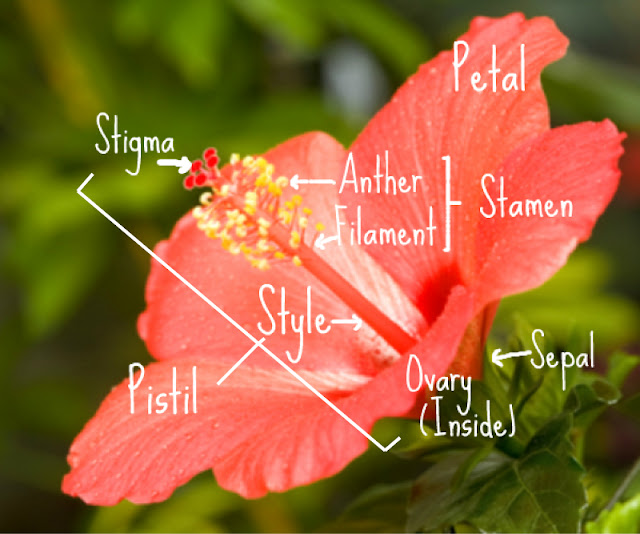Botany: The Seven Most Common Families of Plants, Lesson 2: The Mustard Family and Parts of a Flower
| source |
For our second botany lesson this summer, continuing our quest to study the seven most common families of plants using Thomas Elpel's Botany in a Day, we looked at the Mustard Family, which is identified by its four green sepals,
four petals, six stamen; four tall and two short
and one center pistil. This required us to learn about the parts of flowers and their terms.
Learning the Parts of a Flower
 |
| source |
This is a good time to do a flower dissection. We learned that the male flower part can be remembered because they are called stamen or "stay men." We also learned that when identifying a plant, one should work from the outside in...first the sepals, then petals and lastly the stamen and pistil.
 |
| source |
The Mustard Family includes many plants found in your garden such as radishes, turnips, cabbage, cauliflower, kohlrabi, Brussels sprouts, broccoli and kale. If you have any of these growing in your garden, you can look for the Mustard family's distinctive characteristics.
The difficulty here is that the flowers are very tiny and are therefore much more difficult to see than in the more distinctive flowers such as the above hibiscus, which is why it is good to learn the flower parts with a flower in which it is easy to see the parts first.
Making Your Own Mustard
Commercial mustard is made from the seeds of the black mustard plant combined with vinegar.
 A good project to go with the Mustard family is to made your own mustard. We have made it before, (all of the pictures are from when we made mustard in 2008) and when you first taste it, it is very hot, but it should mellow after it ages for about two weeks.
A good project to go with the Mustard family is to made your own mustard. We have made it before, (all of the pictures are from when we made mustard in 2008) and when you first taste it, it is very hot, but it should mellow after it ages for about two weeks.English Pub Mustard
1 Cup dry mustard
1/2 cup packed brown sugar
1 tea. salt
1/4 tea. turmeric
1/2 cup flat beer or ale
Mix dry ingredients in food processor or blender With machine running, add beer through the feed tube in a slow and steady stream. Blend until smooth and creamy, stopping the machine to scrape down the sides. Transfer to a jar with a tight fitting lid. Age in a cool dry place for 2 weeks. Store in the refrigerator.


